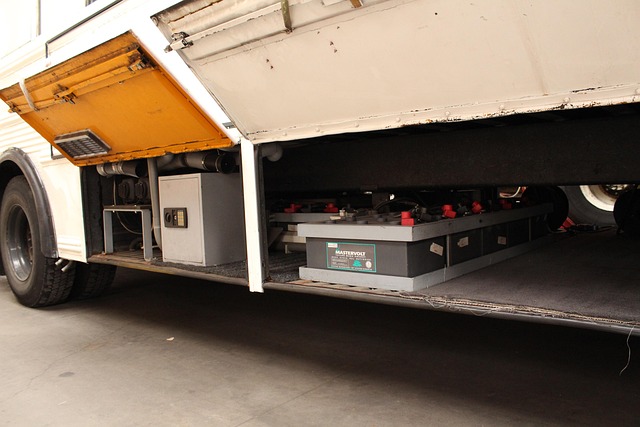Looking to register your car in California? This comprehensive guide breaks down the process step-by-step. From understanding key requirements to gathering essential documents, you’ll learn how to navigate the DMV efficiently. A crucial step is the DVW VIN verification, detailing the vehicle’s history. Once prepared, complete the application form accurately and pay the required fees for a smooth registration experience. Get ready to hit the road!
- Understand California Car Registration Requirements
- Gather Necessary Documents for DMV Visit
- Perform VIN Verification: Steps & Process
- Complete Application Form Accurately
- Pay Registration Fees and Receive Your Plate
Understand California Car Registration Requirements

Before registering your car in California, it’s crucial to understand the state’s specific requirements. The California Department of Motor Vehicles (DMV) mandates several steps for new and used vehicle registration, including a comprehensive vin verification process. This involves confirming the vehicle’s identity using its unique 17-character Vehicle Identification Number (VIN).
A mobile vin verifier or mobile vin inspection service can significantly streamline this process. These services allow you to quickly and conveniently verify your car’s VIN by providing real-time data directly from the manufacturer or authorized databases. By utilizing these modern tools, you ensure accuracy and speed in fulfilling California’s registration obligations, making the overall registration experience less cumbersome.
Gather Necessary Documents for DMV Visit

Before heading to the DMV, it’s crucial to gather all the essential documents required for car registration in California. This includes your vehicle’s registration certificate from the previous state (if applicable), proof of insurance, and a valid driver’s license. Additionally, you’ll need to complete a Vehicle Identification Number (VIN) verification process, which can often be done via a simple mobile VIN inspection or at a DMV office during your visit.
Ensure that your vehicle’s title is also available if it’s a new purchase or a transfer of ownership. Some key forms such as the SM 210 (California Vehicle No-Fault Insurance Declaration) and an odometer statement may be required, depending on your specific situation. Having these documents ready will streamline the registration process, especially during peak hours when lines at the DMV can get long.
Perform VIN Verification: Steps & Process

Before registering your car in California, it’s crucial to perform a Vehicle Identification Number (VIN) verification. This process ensures that the vehicle you’re about to register is legitimate and hasn’t been reported as stolen or had its identity tampered with. The California Department of Motor Vehicles (DMV) recommends performing this check, which involves cross-referencing the VIN with reputable databases to gather important information about the car’s history.
To conduct a DMV VIN verification, you can either visit a local DMV office and request assistance or opt for a convenient alternative like a mobile vin inspection service. The latter involves hiring a specialized professional who will perform the vin inspection on-site using advanced tools, often offering real-time data access. This method is particularly appealing for those with busy schedules or limited mobility. Alternatively, some services provide remote or online vin verification, allowing you to simply input your VIN and receive an instant report. Ensure that any service you choose is reputable and accredited to avoid potential scams.
Complete Application Form Accurately

When registering your car in California, one crucial step is to complete the Application Form accurately and thoroughly. This form requires precise information about your vehicle, including its make, model, year, and unique Vehicle Identification Number (VIN). Accurate VIN entry is essential for successful registration and later verification by the California Department of Motor Vehicles (DMV).
For added convenience and accuracy, consider utilizing a mobile vin inspection or mobile vin verifier service. These services offer on-demand, in-person VIN verification to ensure your vehicle information matches the DMV records. This can help streamline the registration process and reduce potential errors that may delay your car’s registration.
Pay Registration Fees and Receive Your Plate

After completing your vehicle’s registration application, it’s time to pay the required fees. The California Department of Motor Vehicles (DMV) will verify the Vehicle Identification Number (VIN) and ensure that all information is accurate before issuing your registration and license plate. This process, often referred to as DMV VIN verification, is a crucial step in the registration procedure.
The fee for car registration varies based on your vehicle’s type and age. You can pay online or at a local DMV office. Once processed, you’ll receive your official registration documents and personalized license plates. If you opt for a mobile vin inspection or use a mobile vin verifier, the process might be slightly faster as these services streamline the VIN verification step, allowing for a more efficient registration experience.
Registering a car in California involves understanding key requirements, gathering essential documents, successfully completing a VIN verification process at the DMV, accurately filling out application forms, and paying associated fees. By diligently navigating these steps, you’ll be on your way to securing a valid registration and license plate for your vehicle. Remember, proper documentation and adherence to California’s regulations ensure a smooth car registration experience.



